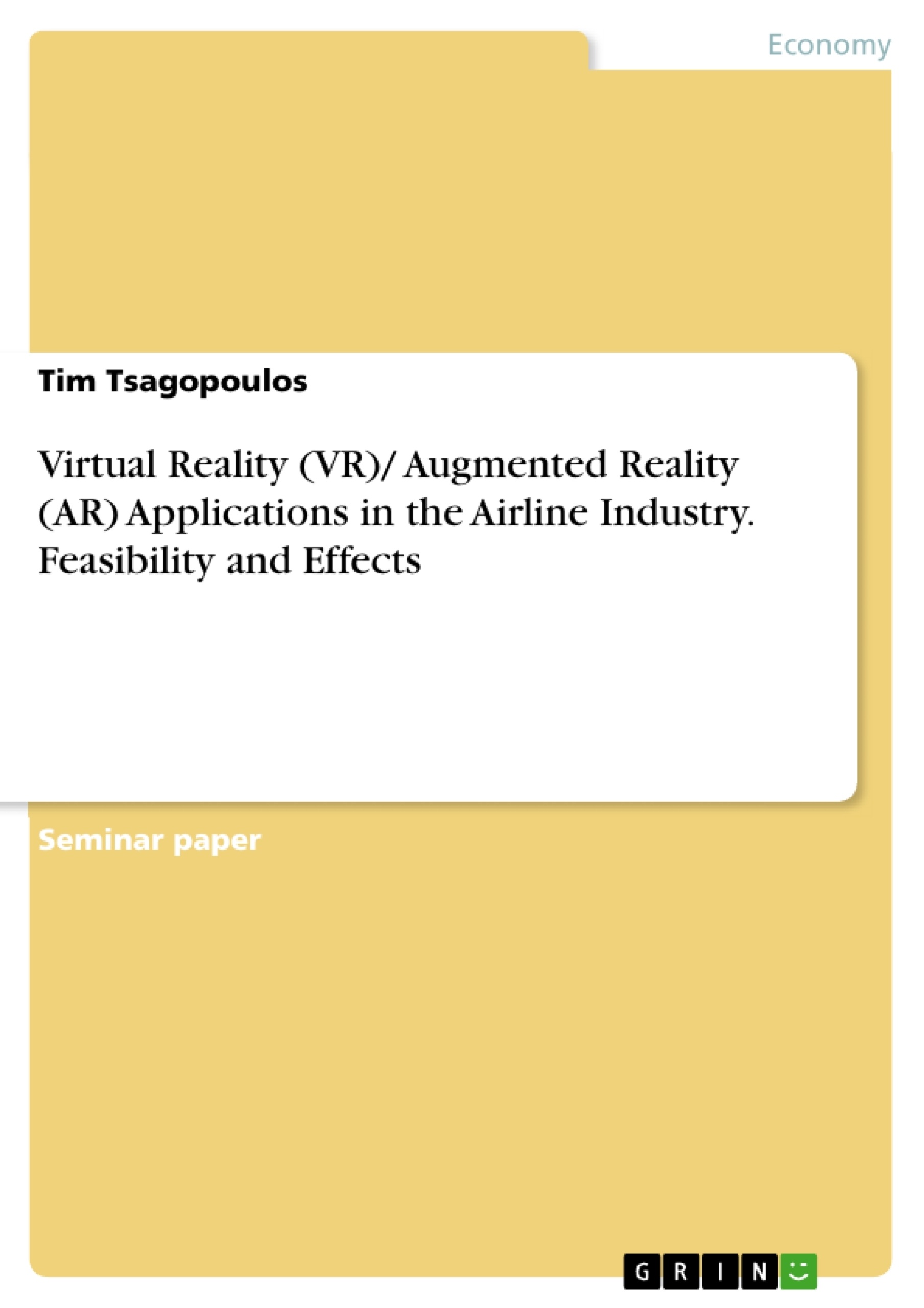The seminar paper explores the effectiveness and feasibility of virtual reality applications in the airline industry. Virtual reality offers numerous advantages, especially when compared to traditional media. This can be used by airlines to safe costs and improve the overall safety of processes, which are regarded as the two main drivers for implicating virtual reality. The technology is used broadly around the airline industry but does not lead to the desired success in every aspect, where the research reveals that there should be a clear distinction between replacing and supporting traditional applications. It is of importance to keep track of technological progress advanced by other industries, taking advantage of the high interest generated for the technology to derive practical applications for airlines.
Table of Contents
- 1 Introduction
- 1.1 Problem
- 1.2 Objective
- 1.3 Methodology
- 2 Virtual Reality
- 2.1 Visual Feedback
- 2.2 Aural Feedback
- 2.3 Haptic Feedback
- 3 Augmented Reality
- 4 Other Realities
- 5 Drivers for VR/AR Implementation
- 6 Implementation of VR in the Airline Industry
- 6.1 On-board Applications
- 6.1.1 In-flight Entertainment
- 6.1.2 Acceptability towards VR Usage in Flight
- 6.1.3 VR for Cabin Crew
- 6.1.4 VR for Flight Deck Crew
- 6.2 Off-board Applications
- 6.2.1 Pre-flight Service
- 6.2.2 Marketing
- 6.2.3 Maintenance
- 6.2.4 Training
- 6.2.4.1 Maintenance
- 6.2.4.2 Flight Crew
- 6.2.4.3 Cabin Crew
- 7 Conclusion
Objectives and Key Themes
This seminar paper explores the feasibility and effects of Virtual Reality (VR) and Augmented Reality (AR) applications in the airline industry. The paper aims to investigate the potential of VR and AR technologies to enhance various aspects of the airline experience, including on-board entertainment, passenger safety, crew training, and maintenance procedures. The paper analyzes the drivers and challenges associated with implementing these technologies and explores the potential impact on the industry.
- Feasibility and implementation of VR/AR technologies in the airline industry
- Potential benefits of VR/AR applications for both on-board and off-board experiences
- Impact of VR/AR on passenger satisfaction, crew training, and operational efficiency
- Challenges and limitations associated with VR/AR implementation in the airline context
- Future trends and developments in the application of VR/AR in aviation
Chapter Summaries
The paper begins by introducing the problem statement and defining the objective and methodology. Chapter 2 provides an overview of Virtual Reality (VR) technologies and their key features. It then introduces Augmented Reality (AR) and other realities, such as Mixed Reality (MR) and Augmented Virtuality (AV), and discusses the drivers for VR/AR implementation. The paper then delves into the implementation of VR in the airline industry, covering both on-board and off-board applications.
On-board applications include VR-based in-flight entertainment, the acceptability of VR usage in flight, and the use of VR for both cabin crew and flight deck crew training. Off-board applications encompass pre-flight service, marketing, maintenance, and training for various roles.
Keywords
The core focus of the paper lies in the exploration of Virtual Reality (VR), Augmented Reality (AR), and their implementation in the airline industry. Key concepts include on-board and off-board applications, in-flight entertainment, passenger safety, crew training, maintenance procedures, and the challenges and limitations of these technologies. The paper also delves into related areas such as Mixed Reality (MR) and Augmented Virtuality (AV).
- Citation du texte
- Tim Tsagopoulos (Auteur), 2020, Virtual Reality (VR)/ Augmented Reality (AR) Applications in the Airline Industry. Feasibility and Effects, Munich, GRIN Verlag, https://www.grin.com/document/1158474



